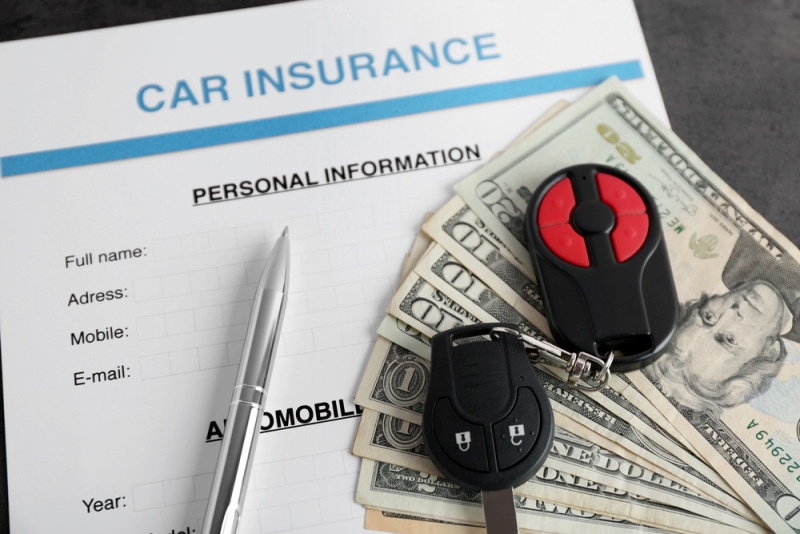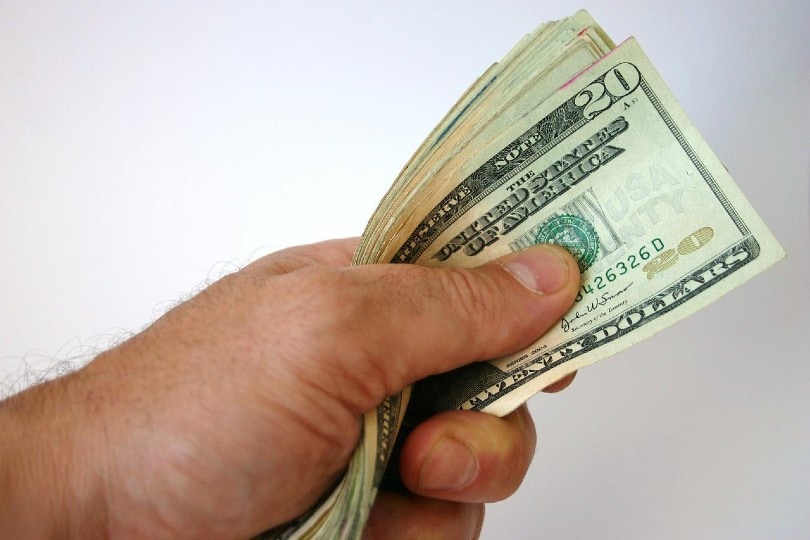$500 vs. $1000 Auto Insurance Deductible: Pros, Cons, & Differences
-
Codee Chessher
- Last updated:

Your auto insurance deductible is how much you’re responsible for paying in the event of an accident that causes damage to your car or people. Depending on your policy, you can opt for a $250, $500, $1,000, or even $2,000 deductible.
Unfortunately, choosing the wrong deductible can have serious consequences if you’re not adequately prepared. Let’s find out what you need to know about deductibles and how to decide whether $500 or $1,000 is right for you.

Overview of $500 Deductible

Generally speaking, a $500 deductible means you only pay $500 in the event of an incident, while your insurance company would cover the remainder of your claim. That sounds pretty sweet, but a $500 deductible is rather low and would spike up your monthly premium by quite a bit. Lower premiums like $500 and $250 carry a lot more extra risk for the insurance company, so they recoup that risk by charging you more every month on your premium.
Insurance companies are also warier about giving people low deductibles if they’re considered high risk. That means they could turn you down for a low deductible like $500 if you’ve had a lot of tickets or accidents.
When to Choose
You might want a $500 deductible if you have enough income to cover the increased premiums that come with it, but less in the way of potential surprises. If that’s a bit cryptic, let us clarify.
Let’s say you have a decent income stream, but not a lot in the way of savings. A $500 deductible means you pay less in case you have an accident, preserving your savings. The premiums will eat up more of your income, though, so be warned.
Cost
It’s difficult to give exact estimates of how much more a $500 deductible will run you because many factors come together to determine your premiums. On average, though, you can expect to pay up to 10% more for your premiums over the course of a year. If your insurance runs you more than $500 a month, that could be a decent chunk of change monthly.

- Less risk in case of an accident
- More protection if you can afford it
- Doesn’t require savings
- May be affordable if you have low premiums
- Can be expensive if your premiums are already high
- Requires more scrutiny than a high deductible
- Jacks up your premiums by up to 10%
- May increase premiums by more than 10% under some circumstances

Overview of $1,000 Deductible

Higher deductibles are more standard and desirable for people who want to pinch pennies monthly because they don’t require high insurance premiums. While $1,000 is a fairly standard deductible, it can even be considered a little low in some cases. With a $1,000 deductible, you would have to pay $1,000 in the event of an accident or other insurable situation. Your insurer would be responsible for the rest.
This amount is a lot for most people, so that means you need to have some savings in case you have an accident. What if someone T-bones you at an intersection and you can’t pony up the $1,000? A high deductible sounds pretty awful in that case, right? Maybe, but many people find it’s worth the savings throughout the year.
When to Choose
Higher deductibles are desirable and often necessary because they let you save money. If you don’t make a lot monthly, insurance premiums can burn up a lot of cash.
Choosing a higher deductible means you can keep more money in your wallet now, but you have to be very aware of the risk that a car accident would pose. Have some savings tucked away in case the worst happens.
Cost
Higher deductibles might be attractive because they lower how much you spend paying premiums, but they can cost a lot at once if you’re involved in an accident. In most cases, you can save as much as 10% by switching from a $500 deductible to a $1,000 deductible.
A lot of people don’t mind taking higher premiums because they feel it saves them money in the short term. Plus, higher deductibles don’t seem very daunting if you’re a safe driver who avoids accidents at all costs.

- Saves you money immediately by reducing insurance premiums
- Little risk if you’re a safe driver
- Insurance companies approve virtually anyone for high deductibles
- Costly in the event of an accident
- Arguably saves a minimal amount of money
 Which Deductible Is Right for You?
Which Deductible Is Right for You?
If you can afford to pay higher premiums but don’t want to risk your hard-earned savings in case of a collision, a $500 deductible is probably right for you. You have more financial cushion in case the worst happens but pay a bit more for peace of mind. This isn’t feasible for everyone but can be perfect if you have great cash flow.
The $1,000 deductible is better for most people who want to save money in the short term. You could argue the amount is pretty minimal, but a little goes a long way when you’re broke. Choose $1,000 deductibles when you’re confident in your driving skills and want to be frugal.

Conclusion
Deductibles are the worst part of insurance. They force you to gamble on your own driving abilities and those of the other drivers on the road. For most people, $1000 is fine as a deductible. It costs more if you have an accident but saves you up to 10% in the meantime. Also, $500 is a great choice if you have the money to spare now but don’t want to risk someone wiping out your savings by hitting your car.
Featured Image Credit: Africa Studio, Shutterstock
Contents
 Which Deductible Is Right for You?
Which Deductible Is Right for You?